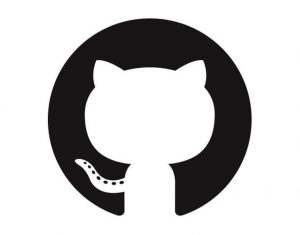Todoist has long been a popular choice for project management and task organization, but as the market continues to evolve, many users are seeking alternatives with different features, pricing or target audiences. In the increasingly competitive project management software market, it’s crucial for businesses to select the right tool that aligns with their unique needs and requirements.
Let’s dive into the top seven Todoist alternatives for 2023, comparing their key features, pricing and pros and cons, to ensure you’re confident in your choice when considering moving away from Todoist.
Top Todoist alternatives comparison
Before we delve into the details of each Todoist alternative, let’s take a look at a comparison table that summarizes their main features. We’ve chosen relevant features that differentiate these alternatives from Todoist and each other.
Jump to:
monday work management: Best for comprehensive project management with a focus on collaboration and transparency
monday work management stands out as a top Todoist alternative due to its highly visual and customizable workflow management

capabilities. This cloud-based platform caters to a diverse range of industries and team sizes, offering flexibility and scalability to grow alongside your business. monday.com’s robust feature set and intuitive interface make it an excellent choice for teams looking for a more visual and adaptable project management solution.
For more information, read the full monday review.
Pricing
- Individual: Free forever for up to two users.
- Basic: $8 per user per month when billed annually. $10 per user billed monthly.
- Standard: $10 per user per month when billed annually. $12 per user billed monthly.
- Pro: $16 per user per month when billed annually. $20 per user billed monthly.
- Enterprise: Pricing available upon request.
Features
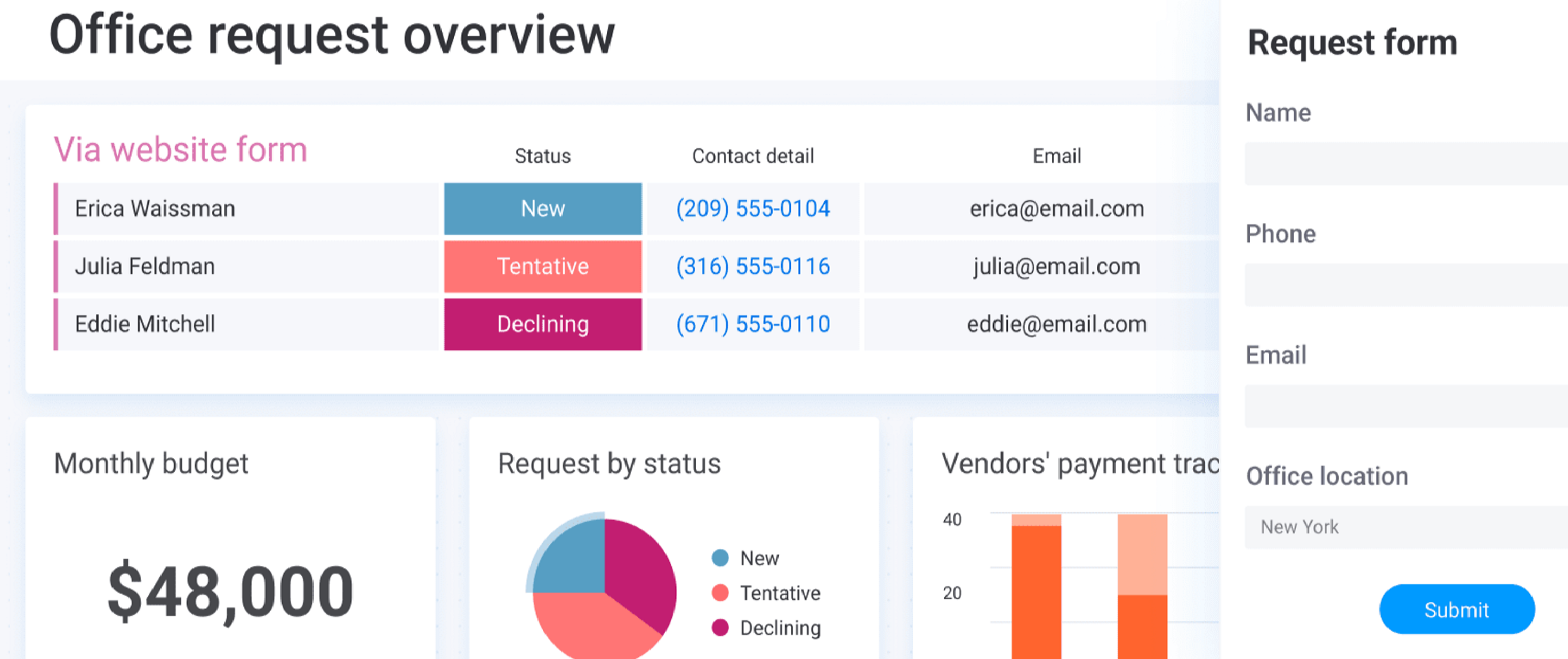
- Drag-and-drop interface allows users to easily manage tasks (Figure A), deadlines and priorities.
- Multiple view types, including list, kanban, calendar and timeline, provide different ways to visualize projects and tasks.
- Customizable automations streamline repetitive processes and improve overall efficiency.
- Time tracking feature helps businesses monitor employee productivity and optimize resource allocation.
- Extensive integration capabilities allow seamless connection with popular third-party applications like Google Drive, Slack and Trello.
Pros
- Highly visual interface simplifies project management and improves team collaboration.
- Customizable features allow the platform to adapt to various industries and workflows.
- Strong customer support provides responsive assistance through multiple channels, including live chat and email.
Cons
- Pricing may be less accessible for smaller businesses or freelancers with limited budgets.
- The extensive feature set can be overwhelming for new users and may introduce a learning curve.
- Limited functionality in the free plan restricts usability for teams that need more advanced features.
MeisterTask: Best for visual task management
MeisterTask is a visually appealing project management tool designed to make task management more intuitive and enjoyable. This Todoist alternative is perfect for teams that prefer a visually-driven approach to managing projects and tasks while still having access to powerful features and integrations.

Pricing
- Basic: Free for single users.
- Pro: $11.99 per user per month.
- Business: $23.99 per user per month.
- Enterprise: Contact MeisterTask for custom pricing.
Features
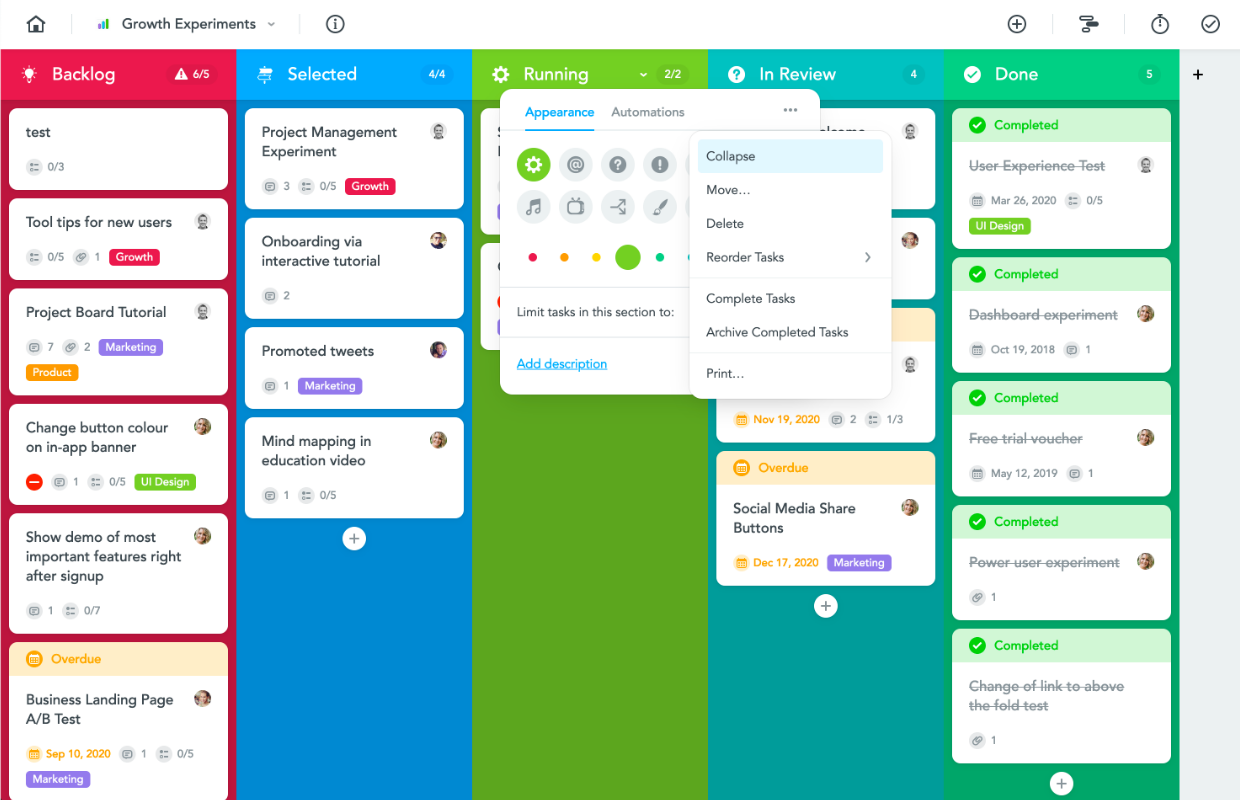
Kanban-style boards (Figure B) make it easy to visualize project progress and identify bottlenecks or areas requiring attention.
- Time tracking feature allows users to monitor time spent on tasks, making it easier to manage resources and meet deadlines.
- Workflow automations streamline processes by automatically assigning tasks, moving tasks between stages and more.
- Custom fields enable users to add additional information to tasks, tailoring the platform to their unique requirements.
- Wide range of integrations with popular productivity tools, such as Slack, Trello and Google Drive, ensures seamless collaboration and data sharing.
Pros
- MeisterTask’s visually-driven interface makes it easy for users to understand and manage tasks and project progress.
- The platform’s flexibility allows users to create custom workflows that match their needs and processes.
- MeisterTask offers a free plan with unlimited users, making it an accessible option for small teams or those with limited budgets.
Cons
- Some users may find the reporting features to be less comprehensive compared to other Todoist alternatives.
- Although MeisterTask offers a variety of integrations, it may not support all the tools used by certain teams or organizations.
- Users who prefer a more traditional list-based task management system may find the kanban-style boards less appealing.
Any.do: Best for personal and small team productivity
Any.do is a task and project management tool designed for both personal and small team productivity. This software tool focuses on
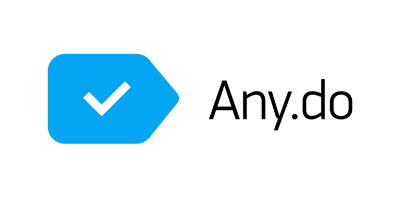
simplicity and ease of use, making it an excellent choice for those who want a straightforward solution without unnecessary complexity.
Pricing
- Free: $0 per user.
- Premium:$3 per user per month, billed annually.
- Teams:$5 per user per month, billed annually.
Features
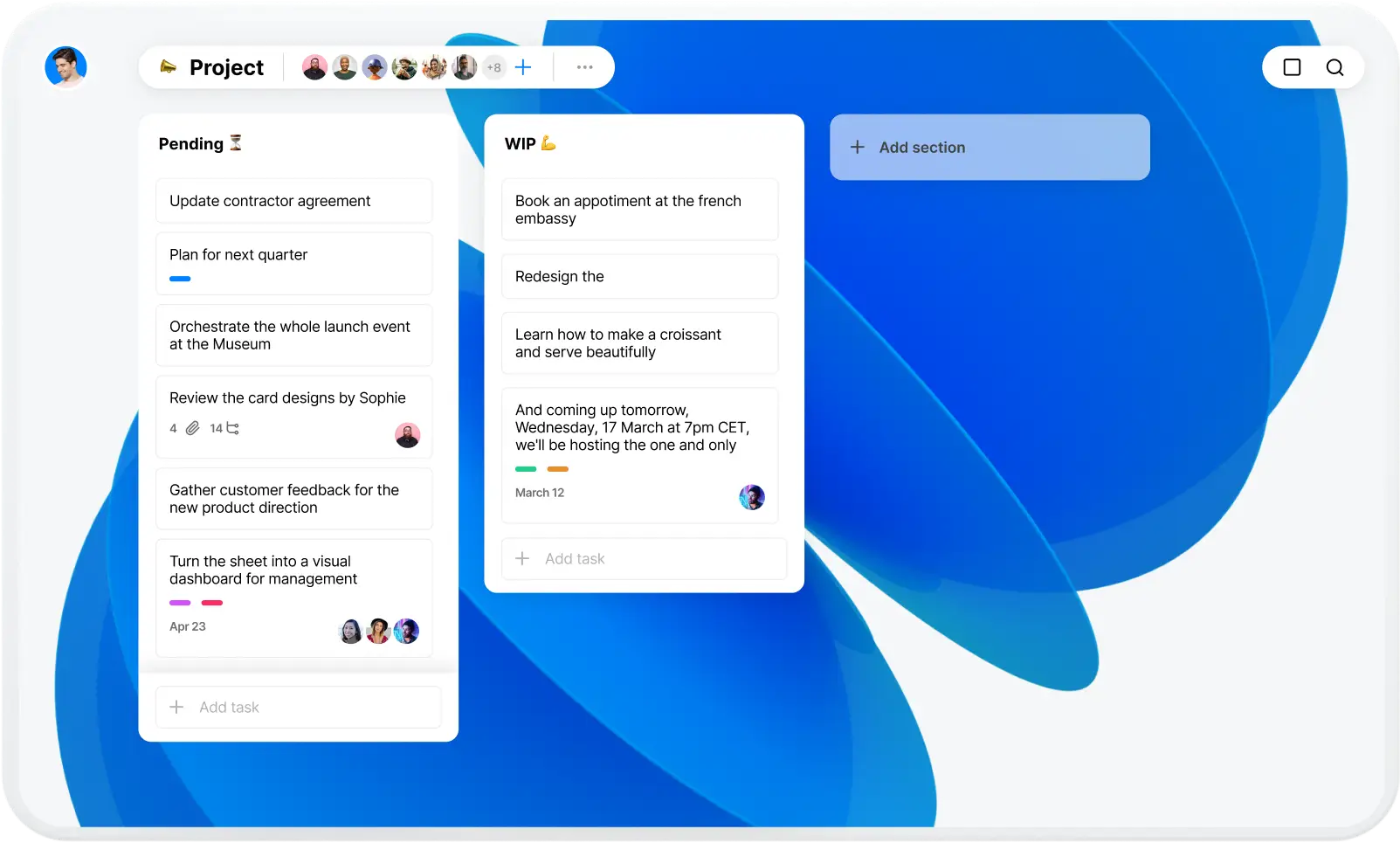
- Task lists and calendar view (Figure C) allow users to easily manage and organize their tasks, appointments and reminders.
- Location-based reminders help users stay on top of their tasks by sending notifications when they arrive at or leave a specific location.
- Recurring tasks enable users to set up repeating tasks, ensuring that routine responsibilities are never missed.
- Shared lists and team chat features facilitate collaboration among team members and help keep everyone on the same page.
- Any.do Assistant is an AI-powered virtual assistant that helps users manage their tasks and time more efficiently.
Pros
- Any.do is simple and easy to use, making it an ideal solution for personal productivity and small teams with straightforward needs.
- The platform offers a mobile app for both iOS and Android, allowing users to manage tasks and projects on the go.
- Any.do’s location-based reminders and AI-powered assistant set it apart from other Todoist alternatives, providing unique tools to enhance productivity.
Cons
- Any.do may not offer the advanced features or customization options required by larger teams or more complex projects.
- Some users may find the free plan’s limitations restrictive, as it only offers basic features and is limited to individual use.
- The platform’s integration options may not be as extensive as those found in other Todoist alternatives, which could limit its utility for teams using a wide range of productivity tools.
ClickUp: Best for customizability
ClickUp is a powerful project management tool that stands out for its extensive range of features and high degree of customizability. Its

intuitive interface and robust functionality make it an excellent choice for businesses looking to streamline their workflows and enhance team collaboration.
For more information, read thefull ClickUp review.
Pricing
- Free Forever: $0; best for personal use.
- Unlimited: $5 per user per month billed annually, or $9 billed monthly.
- Business: $12 per user per month billed annually, or $19 billed monthly.
- Business Plus: $19 per user per month billed annually, or $29 billed monthly.
- Enterprise: Pricing information available upon request.
Features
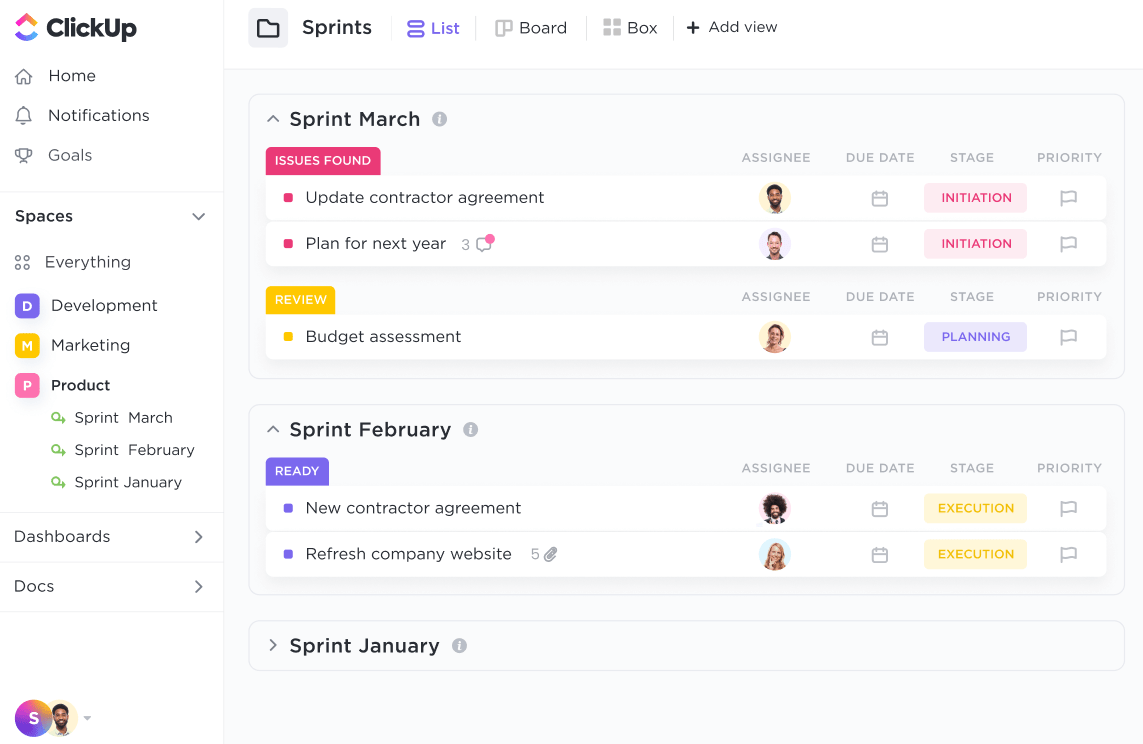
- ClickUp allows users to adapt the platform to their specific needs and preferences by offering various layout options (Figure D) and the ability to create custom fields and statuses.
- Users can track time spent on tasks directly within the platform, making it easier to manage resources and optimize productivity.
- ClickUp’s powerful automation capabilities help streamline workflows by automating repetitive tasks and reducing manual work.
- Seamless integration with a wide range of third-party applications, enabling users to work within a single, unified platform.
Pros
- It offers a high degree of flexibility and customization, allowing businesses to tailor the platform to their unique requirements.
- ClickUp boasts a comprehensive set of features that cater to various project management needs, making it suitable for diverse industries and team sizes.
- ClickUp’s pricing structure is affordable and offers good value for money, with a free plan available for those with limited budgets.
Cons
- Some users may find ClickUp’s extensive range of features and customization options overwhelming at first, resulting in a steeper learning curve.
- Some users have reported occasional performance issues, such as slow loading times or occasional glitches.
- While ClickUp offers a free plan, it comes with limited features and storage, which may not be suitable for larger teams or complex projects.
Teamwork: Best for remote teams
Teamwork stands out as a top Todoist alternative, especially for businesses looking for a project management tool that excels in

collaboration and flexibility. Teamwork offers a comprehensive set of features designed to enhance teamwork and streamline project management, making it an excellent choice for organizations of all sizes and industries.
For more information, read the \full Teamwork review.
Pricing
- Free Forever: $0 per month for up to five users.
- Starter: $5.99 per user per month billed annually or $8.99 billed monthly.
- Deliver: $9.99 per user per month billed annually, or $13.99 billed monthly.
- Grow: $19.99 per user per month billed annually, or $25.99 billed monthly.
- Scale: Quote available upon request.
Features
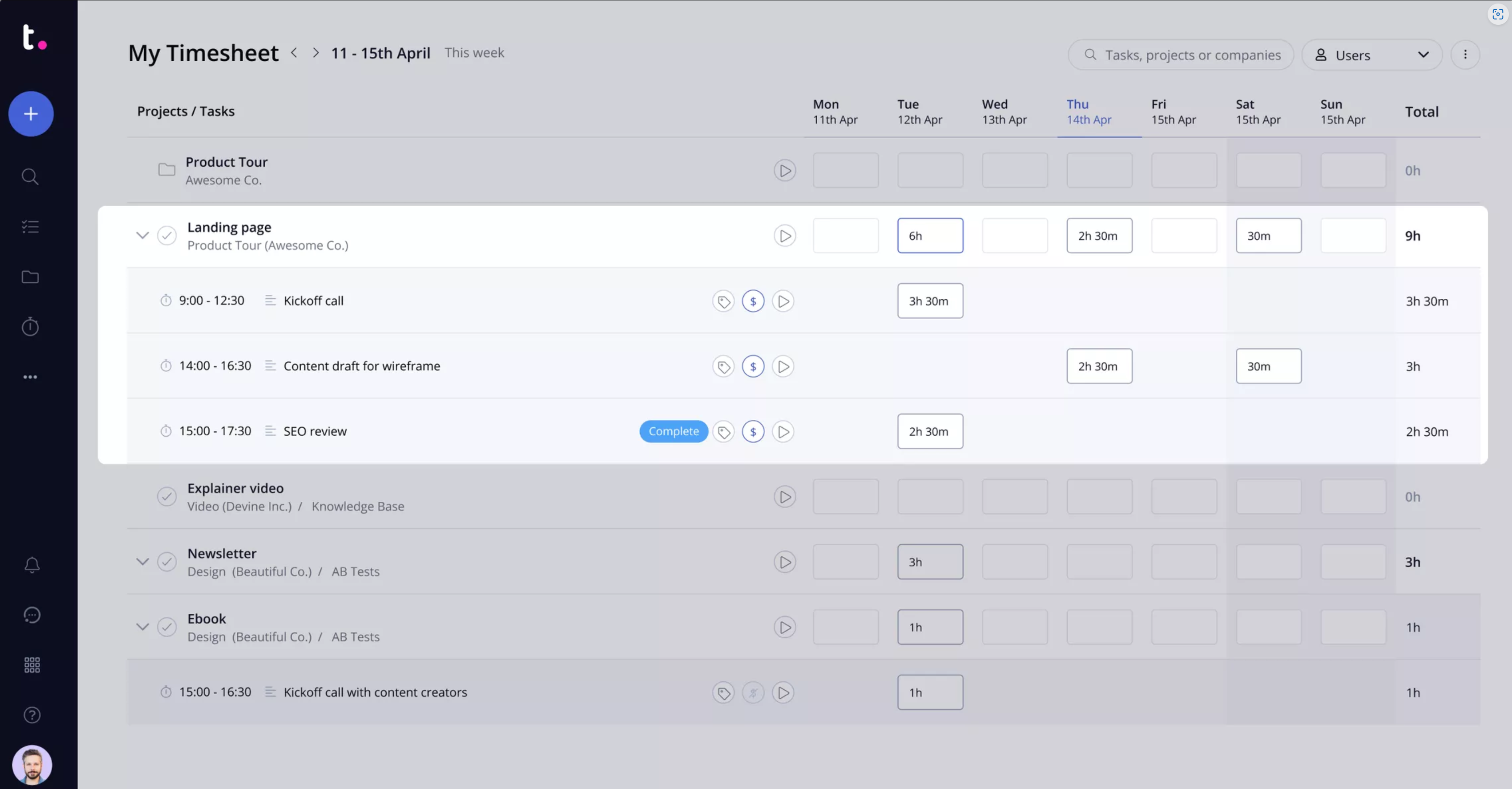
- Various view options, including list, kanban board, Gantt chart and workload, allow users to visualize projects in their preferred format.
- Built-in time tracking capabilities (Figure E) help monitor team productivity and generate invoices based on billable hours.
- Portfolio management features to gain a high-level overview of all projects, assess progress and allocate resources effectively.
- Custom workflows with task dependencies and milestones, ensuring that projects follow a structured process.
Pros
- Teamwork promotes efficient teamwork by offering features like real-time updates, team chat and file sharing.
- The user-friendly design makes it easy for team members to navigate and use the platform, leading to a smooth onboarding experience.
- Teamwork integrates with a wide range of third-party apps, such as Slack, Google Drive and Salesforce, enhancing overall productivity.
Cons
- The Free Forever plan comes with some restrictions, which may not be suitable for businesses with more advanced project management needs.
- Some users have reported slow loading times or occasional glitches, which may affect productivity.
- While the interface is user-friendly, mastering some advanced features may take time for new users.
Trello: Best for ease of use
Trello is a highly visual and easy-to-use project management tool, ideal for teams looking for a simple yet powerful way to organize their tasks and projects. With its unique kanban board approach, Trello allows users to visualize their workflow, making it easy to

see the progress and status of tasks at a glance. Its intuitive interface and flexible structure make it a top choice for businesses seeking a more visually appealing Todoist alternative.
For more information, read the full Trello review.
Pricing
- Free: $0; restricted to 10 boards per workspace.
- Standard: $5 per user per month when billed annually and $6 when billed monthly.
- Premium: $10 per user per month, billed annually and $12.50 when billed monthly.
- Enterprise: Starts at $17.50 per user per month with a minimum of 50 users billed annually. Costs $210 for a team of 50 users.
Features
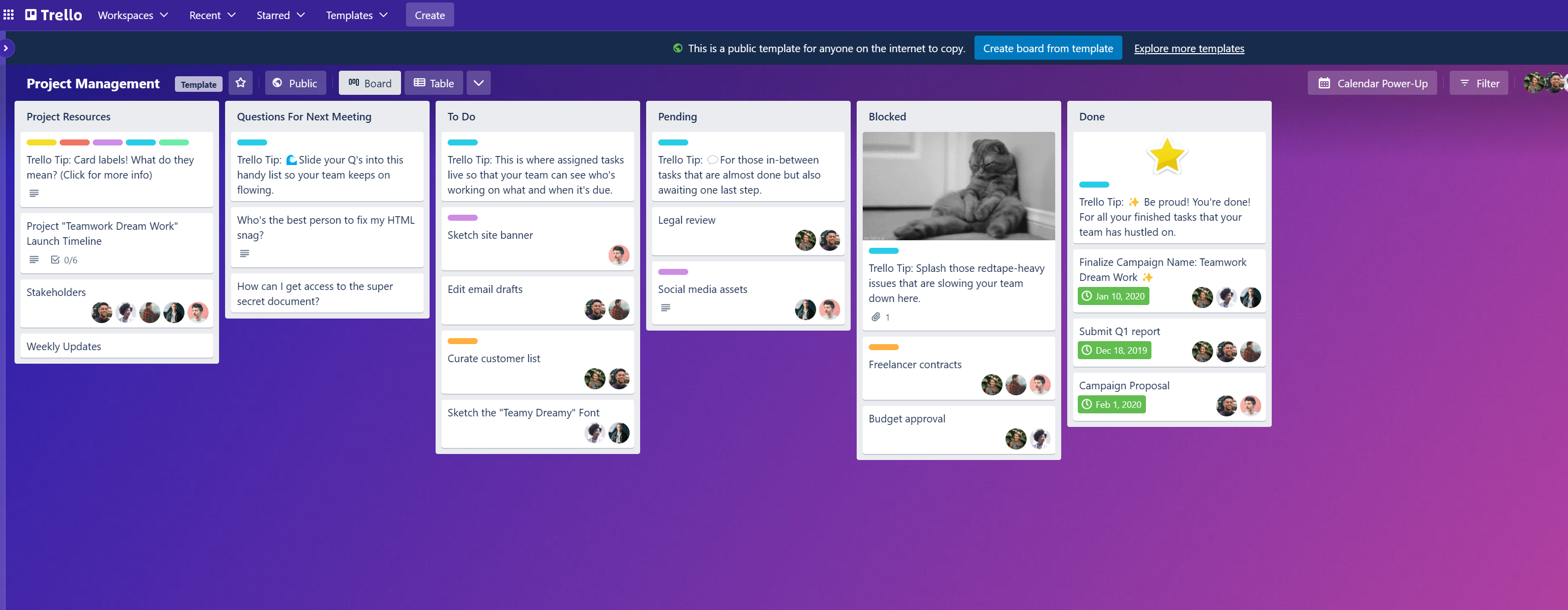
- Kanban board view (Figure F) allows users to easily visualize tasks and their progress, making it simple to track project status and identify bottlenecks.
- Built-in Power-Ups provide the ability to add extra functionality such as calendars, custom fields and integrations with popular third-party apps.
- Flexible structure enables teams to tailor their boards to match their specific workflow, ensuring that the tool adapts to their needs rather than the other way around.
- Real-time collaboration ensures that team members can work together efficiently, with changes and updates appearing instantly across devices.
Pros
- Highly visual interface makes it easy for users to understand and manage their tasks, promoting greater team engagement and productivity.
- Scalable pricing plans provide options for businesses of all sizes, ensuring that they only pay for the features they need.
- Wide range of available integrations allows Trello to connect with other tools and services, streamlining workflows and reducing the need for manual data transfers.
Cons
- Limited built-in reporting and analytics features may require users to rely on third-party integrations or manual processes for more advanced data analysis.
- Lacks native time tracking functionality, which could be a crucial feature for businesses that need to monitor the time spent on tasks and projects.
- Can become overwhelming for large, complex projects, as users may struggle to manage a high volume of tasks and boards simultaneously.
Wrike: Best for scalability
Wrike is a powerful project management platform that offers a high level of customization and scalability. This Todoist alternative is an excellent choice for businesses that require a flexible solution that can adapt to their changing needs as they grow or their processes evolve.

For more information, read our full Wrike review.
Pricing
Free:
- $0 per user per month.
- Team: $9.80 per user per month, for 2-25 users.
- Business: $24.80 per user per month, for 5-200 users.
- Enterprise: Five to unlimited users, for large teams. Contact Wrike for pricing information.
Features
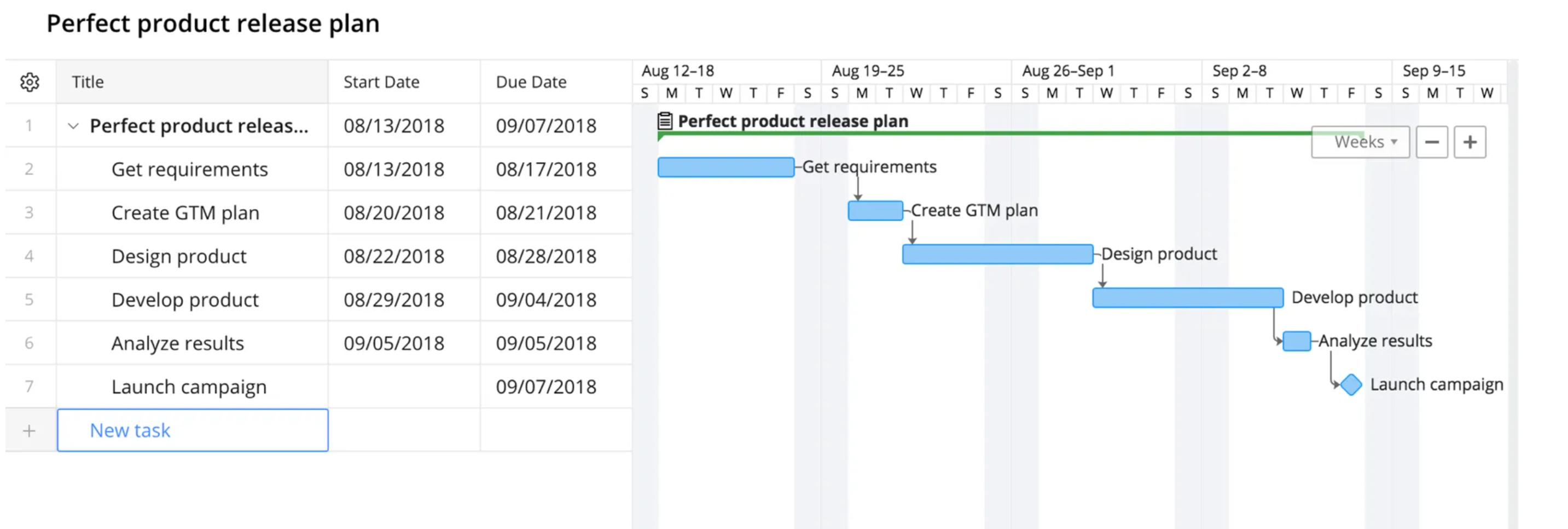
- Customizable dashboards provide users with a personalized overview of their tasks (Figure G), projects and priorities.
- Advanced reporting and analytics tools help businesses make data-driven decisions and track project progress.
- Built-in time tracking capabilities allow users to monitor the time spent on tasks and optimize resource allocation.
- Wrike’s automation engine enables teams to streamline their workflows by automating repetitive tasks and processes.
- Robust integration options allow Wrike to connect with a wide range of third-party apps, including CRM systems, communication tools and file storage services.
Pros
- Wrike offers a high level of customization, enabling businesses to tailor the platform to their unique needs and workflows.
- The platform is highly scalable, making it an excellent choice for organizations that anticipate growth or require flexibility in their project management solution.
- Wrike’s comprehensive feature set caters to a wide range of project management needs, from time tracking and reporting to automation and integrations.
Cons
- Some users may find the learning curve to be steep, especially for those who are new to project management tools or require extensive customization.
- The pricing structure may be prohibitive for smaller businesses or organizations with limited budgets.
- The abundance of features and options can be overwhelming for some users, potentially leading to confusion and underutilization of the platform’s capabilities.
Key features of Todoist alternatives
As you compare Todoist alternatives, it’s important to identify the key features that set each product apart. We’ve outlined five of these differentiating features below, which will help you determine the best fit for your business.
Multiple view types
One of the essential features to consider when choosing a Todoist alternative is the availability of multiple view types. Different views, such as list, kanban board, calendar and timeline, allow users to visualize their tasks and projects in a way that best suits their workflow. Multiple view types enable team members to switch between different visual representations, increasing efficiency and facilitating better collaboration.
Time tracking
Time tracking is a valuable feature for businesses that need to monitor the time spent on tasks and projects. This feature helps companies optimize their resources, track employee productivity and manage budgets more effectively. Not all Todoist alternatives offer built-in time tracking, so if this is an essential feature for your business, be sure to choose a product that supports it.
Custom fields
Custom fields allow users to add additional information to their tasks, such as priority levels, estimated time or custom labels. This feature enables businesses to tailor the project management tool to their specific needs and processes, ensuring that essential data is captured and easily accessible. Custom fields can also help with reporting and analytics, as they allow for more precise filtering and sorting of tasks.
Automation
Automation features can significantly improve team efficiency by automating repetitive tasks and streamlining workflows. For example, automation can automatically assign tasks to team members based on specific criteria, or move tasks between stages as they progress. By reducing the manual work required for task management, automation allows team members to focus on more critical aspects of their projects.
Integrations
Integration capabilities are crucial when selecting a Todoist alternative, as they allow the project management tool to seamlessly connect with other software your business uses. This can include communication tools, file storage services and other productivity apps. Integrations enable teams to work within a single, unified platform, reducing the need to switch between multiple applications and improving overall efficiency.
How do I choose the best Todoist alternative for my business?
When selecting a Todoist alternative, consider the unique needs and requirements of your business. Evaluate the key features we’ve provided and think about how they align with your business goals and processes. Here are some tips to help you choose the best Todoist alternative:
Identify your priorities: Determine which features are most important to your team, such as time tracking, automation or integrations. This will help you narrow down the options and select a product that meets your needs.
Consider your budget: Pricing varies between alternatives, so it’s essential to find a solution that fits within your budget. Keep in mind that some products offer free plans with limited features, while others have tiered pricing structures based on the number of users and features included.
Assess ease of use: A user-friendly interface and intuitive design are crucial for team adoption and productivity. Be sure to choose a product that your team members will feel comfortable using, which will help ensure a smoother transition.
Read user reviews: Research what other users have to say about their experiences with each product. User reviews can provide valuable insights into the pros and cons of each solution and help you make a more informed decision.
Test the product: Many Todoist alternatives offer free trials or demo versions. Take advantage of these opportunities to test the product and ensure it meets your requirements before committing to a purchase.
Review methodology
Our methodology for choosing the top 7 Todoist alternatives of 2023 involved examining user reviews, features, pricing and target audience to compile these products. We considered the unique needs and requirements of different businesses to ensure our recommendations catered to a diverse range of users.
Source of Article

